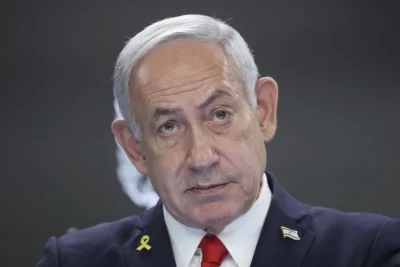
DUBAI, United Arab Emirates— As Iran threatens to attack Israel over the assassination of a Hamas leader in the Iranian capital, its long-vaunted missile program offers one of the few ways for Tehran to strike back directly, but questions loom over just how much of a danger it poses.
The program was behind Iran’s unprecedented drone-and-missile assault on Israel in April, when Iran became the first nation to launch such a barrage since Iraqi dictator Saddam Hussein lobbed Scud missiles at Israel in the 1991 Gulf War.
But few of the Iranian projectiles reached their targets. Many were shot down by a U.S.-led coalition, while others apparently failed at launch or crashed while in flight. Even those that reached Israel appeared to miss their marks.
Now a new report by experts shared exclusively with The Associated Press suggests one of Tehran’s most advanced missiles is far less accurate than previously thought.
The April assault showed “some ability to strike Israel,” said Sam Lair, a research associate at the James Martin Center for Nonproliferation Studies who worked on the analysis. But “if I were supreme leader, I would probably be a little disappointed.”
If Iranian missiles are not able to hit targets precisely “that recasts their role,” Lair added. “They’re no longer as valuable for conducting conventional military operations. They may be more valuable simply as terror weapons.”
As an example, he recalled the harassing missile fire seen on cities in the Iran-Iraq war in the 1980s, when Iran could fire a variety of missiles at a large city and hope some got through.
Iran has repeatedly said it will retaliate for the killing of Ismail Haniyeh. Israel is widely suspected of carrying out the assassination, though it has not claimed it.
The Iranian mission to the United Nations did not respond to a request for comment. But Supreme Leader Ayatollah Ali Khamenei tacitly acknowledged the country’s failure to strike anything of importance in Israel.
“Debates by the other party about how many missiles were fired, how many of them hit the target and how many didn’t, these are of secondary importance,” Khamenei said. “The main issue is the emergence of the Iranian nation” and the Iranian military “in an important international arena. This is what matters.”
A fusillade of missiles and drones
Retaliation had been expected for days after a suspected Israeli strike on April 1 hit an Iranian diplomatic compound in Damascus, Syria, killing two Iranian generals and five officers, as well as a member of the Lebanese Shiite militia Hezbollah.
Footage aired on state television showed that Iran’s April 13 assault began with Revolutionary Guard commander Gen. Hossein Salami speaking by telephone with Brig. Gen. Amir Ali Hajizadeh, the commander of the Guard’s aerospace division.
“Start the ‘True Promise’ operation against Zionist regime’s bases,” he ordered.
As the missiles headed skyward, people across Iran stopped what they were doing and pointed their mobile phones at the launch noise from their cars and the balconies of their homes. Videos analyzed by the AP showed multiple launch sites, including on the outskirts of Arak, Hamadan, Isfahan, Kermanshah, Shiraz, Tabriz and Tehran.
Grainy footage later released through pro-Iranian military social media accounts showed missiles thundering off truck-based mobile launchers. Iran’s bomb-carrying Shahed drones, widely used by Russia in its war on Ukraine, leaped off metal stands, their engines whirring like lawnmowers through the night sky. Some were launched by pickup trucks racing down runways.
The triangle-shaped drones went first, taking hours to reach their targets. Then came the Paveh cruise missiles, taking a shorter time, and finally the Emad, Ghadr and Kheibar Shekan ballistic missiles, which needed only minutes, according to an analysis by the Wisconsin Project on Nuclear Arms Control. Drones and missiles also came from Yemen, likely fired by the Iranian-backed Houthi rebels.
Israeli officials estimated that Iran launched 170 drones, 30 cruise missiles and 120 ballistic missiles. In Jordan, an AP journalist filmed what appeared to be a ballistic missile being intercepted above the Earth’s atmosphere, likely by an Israeli Arrow 3 missile, with the blast radiating out like a circle.
The U.S., the United Kingdom, France and Jordan all shot down incoming fire. The Americans claimed to have downed 80 bomb-carrying drones and at least six ballistic missiles. Israeli missile defenses were also activated, though their initial claim of intercepting 99% of the projectiles appeared to be an exaggeration.
The attack “was very clearly not something symbolic and not something trying to avoid damage,” said Fabian Hinz, a missile expert and research fellow at the International Institute for Strategic Studies who studies Iran. It was “a major attempt to overcome Israeli defenses.”
U.S. officials, who spoke on condition of anonymity to discuss intelligence matters, told the AP they assessed that 50% of the Iranian missiles failed at launch or crashed before reaching their target.




